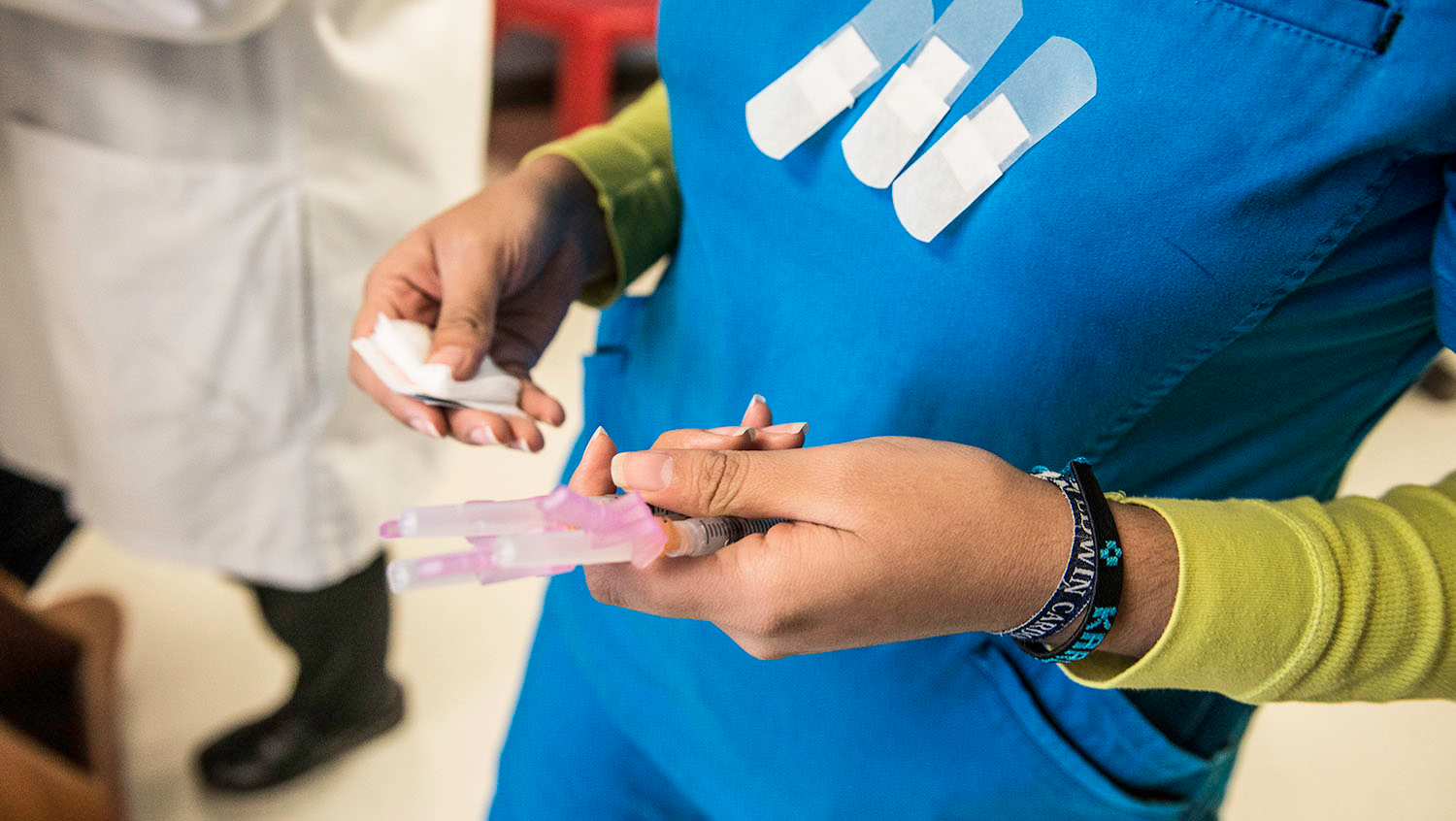COVID-19 Vaccine Two-Dose Completion Is Crucial for Public Health
March 18, 2021

Washington Post, Getty Images
Lessons from the HPV vaccine offer insight and strategies for helping patients receiving COVID-19's dual-dose options finish their vaccination.
A critical component of the COVID-19 pandemic response is vaccination in the hopes of reaching herd immunity. Two out of the three FDA-approved and available vaccines, Pfizer-BioNTech and Moderna, are both two-dose vaccines, meaning they require a second dose in three and four weeks, respectively, following the initial injection. Learning from existing multi-dose vaccinations, the short window between doses may be a benefit for ensuring people complete the series.
Almost all vaccines require multiple doses, including infant vaccines, the childhood vaccines that are required for kids starting school, and adolescent vaccines for human papillomavirus (HPV) and meningococcal vaccination. Some vaccines require two doses, while others need three or four doses to build up a high enough immune response.
For vaccines that need two doses, the first dose is a priming dose and the second is a boosting dose. The first time the body sees the antigen, a substance that induces the immune system to produce antibodies, it makes a small response — hence the term “priming.” It primes the body for the next dose. The second time the body sees it, it makes a more robust immune response. It activates memory cells, and those memory cells are what will last and protect you for a longer period of time — for some vaccines, a lifetime.
It’s important for people receiving a two-dose vaccine to understand that if they only get one dose, they may either not be protected or only be protected for a short time. This means that when patients are getting the Pfizer-BioNTech or Moderna COVID-19 vaccines, they must make sure that their second dose is scheduled. Most vaccination sites will schedule the second dose at the time of the first dose, but if that was not done, it is up to patients to schedule it themselves. Only one dose of these vaccines will not provide full protection.
Learning from HPV vaccine series completion for COVID-19
We can use the HPV vaccine series as an example.
According to the 2019 data, which was reported in 2020, from the National Immunization Survey – Teen and ignoring the impact of COVID-19, the completion rates for the HPV vaccine were 71.5% of 13- to 17 year-olds received one dose, and 54.2% completed the series of two doses. Considering those numbers, about 3 out of every 4 adolescents who starts the series, complete it. This data is an improvement from previous years, after ongoing work has been done to improve completion rates.
We conducted a study with parents as to why their children did not complete the HPV vaccine course. The most common reason was that they were not reminded.
There needs to be an effective system in place to make sure families are called to come back in to complete the series. For those who did not complete a vaccine series, it’s usually not intentional. It’s a lack of reminders.
We can learn lessons from this for the COVID-19 vaccine — although the schedules for HPV and COVID-19 vaccines are different.
There is more leeway for the second dose of the HPV vaccine because HPV vaccines will still work even if the doses are given two years apart. For the dual-dose COVID-19 vaccines, the second dose is required at 21 days for Pfizer-BioNTech and 28 days for Moderna.
This means that for COVID-19 vaccines, reminder systems need to be much more robust than what we even have for HPV.
During phase one of the COVID-19 vaccine rollout, the vaccine was given most often given in a hospital or long-term care setting, so they were easier to track. It is more challenging for the wider population.
The COVID-19 vaccination rollout system needs to do three things:
- Ensure that everyone who receives dose 1 has dose 2 scheduled before they leave the vaccination site
- Enable patient reminders and re-calls
- Assign patient navigators and track people who received dose 1 to makes sure they come in to get their second dose.
Simple plans with text messages and mail postcards to patients have been shown to help.
The urgency is an important component for the COVID-19 vaccine in a way that is not there for a standard immunization course. There’s a difference between a person’s desire to be vaccinated for some hypothetical future potential exposure versus what’s happening right now in the COVID-19 pandemic, a current, daily reality of an outbreak around the world.
The CDC recently released guidelines allowing vaccinated adults to interact with each other without masks or social distancing requirements. People receiving a two-dose vaccine must both doses to protect themselves, their loved ones, and the greater public health. That’s the only way to get back to a sense of normalcy.


